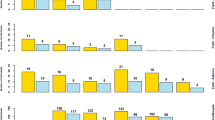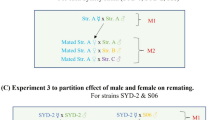Abstract
IN July 1961 specimens from a wild colony of Tetranychus urticae were gathered from Sambucus nigra L. in dunes in the Netherlands and cultivated on beans (Phaseolus vulgaris L.) in the laboratory. This colony (S) proved to be very susceptible to the ovo-larvicide ‘Tedion’ (2,4,5,4′ - tetrachloro - diphenylsulphone—LD50, 1.410 p.p.m.).
This is a preview of subscription content, access via your institution
Access options
Access to this article via Institution of Civil Engineers Library is not available.
Subscribe to this journal
Receive 51 print issues and online access
$199.00 per year
only $3.90 per issue
Buy this article
- Purchase on SpringerLink
- Instant access to full article PDF
Prices may be subject to local taxes which are calculated during checkout
Similar content being viewed by others
References
Zon, A. Q., van, Overmeer, W. P. J., and Helle, W., Entomol. Exp. and App., 7, 270 (1964).
Schrader, F., Arch. Mikrosk. Anat., 97, 610 (1933).
Author information
Authors and Affiliations
Rights and permissions
About this article
Cite this article
OVERMEER, W. Intersterility as a Consequence of Insecticide Selections in Tetranychus urticae Koch (Acari: Tetranychidae). Nature 209, 321 (1966). https://doi.org/10.1038/209321a0
Issue Date:
DOI: https://doi.org/10.1038/209321a0



